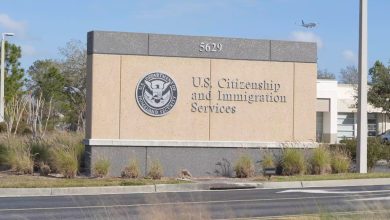The Fading Dream of a United Republic of East Africa

By Jack Gor Chege, US-based journalist
The concept of a United Republic of East Africa has been a longstanding aspiration, dating back to the visionary leaders of the region, including Jomo Kenyatta of Kenya, Julius Nyerere of Tanzania, and Milton Obote of Uganda. These pioneers not only shared a dream of unity among their nations but also envisioned a single sovereign state with one president and one flag. However, despite the initial enthusiasm and optimism, the journey towards achieving this goal has been marred by setbacks, mistrust, and internal conflicts.
A History of Collaboration and Setbacks
The East Africa Community (EAC) was initially formed in the 1960s, with Kenya, Uganda, and Tanzania as its founding members. However, the dream of unity was short-lived, and the community collapsed in 1977 due to disagreements between Kenya and Tanzania. The collapse had far-reaching consequences, including the demise of the East African Railways and East African Airways, which had been symbols of regional cooperation. The three countries retreated to their individual cocoons, strengthening their borders and imposing strict rules on citizens traveling between them.
Reviving the Dream
In 1993, the EAC was revived under the leadership of President Daniel Moi of Kenya, Ali Hassan Mwinyi of Tanzania, and Yoweri Museveni of Uganda. However, progress has been slow, and the dream of a single sovereign state remains elusive. The greatest threat to realizing this vision is not external but internal, with member states harboring mistrust and showing little enthusiasm for reviving the dream of a united East Africa.
Challenges and Conflicts
The EAC has faced numerous challenges, including conflicts between member states. Rwanda and Uganda have had a tumultuous relationship, with both countries accusing each other of sponsoring internal conflicts. Kenya and Tanzania have also had their share of conflicts, with recent tensions arising from Tanzania’s decision to restrict foreign nationals from engaging in small-scale businesses. The conflict between Rwanda and the Democratic Republic of Congo (DRC) is another significant challenge, with both countries having different interests and priorities.
Unlocking the Region’s Potential
Despite these challenges, the EAC has immense potential for growth and development. The region is rich in natural resources, including minerals, oil, and agricultural produce. With a combined population of over 200 million people, the EAC has the potential to become a significant economic powerhouse. However, realizing this potential requires a united and coordinated approach, with a single sovereign state that can harness the region’s resources and talents.
A Call to Action
As the EAC continues to face internal conflicts and challenges, it is imperative for its leaders to rekindle the dream of a united East Africa. President Yoweri Museveni, the only surviving leader of the 1993 revival, has a crucial role to play in enhancing this vision. By working together and putting aside their differences, the member states can unlock the region’s potential and create a prosperous and united East Africa. The time for unity is now, and the EAC must make this decision or risk perishing together. Time is ticking, and the future of the region depends on the actions of its leaders.
The Benefits of Unity
A united East Africa would have numerous benefits, including:
– Economic growth: A single sovereign state would enable the region to harness its resources and talents more effectively, leading to rapid economic growth and development.
– Increased trade: With a single market and customs union, trade between member states would increase, creating new opportunities for businesses and entrepreneurs.
– Improved infrastructure: A united East Africa would be better equipped to develop its infrastructure, including roads, railways, and ports, facilitating the movement of goods and people.
– Enhanced security: A single sovereign state would provide a more secure environment for citizens, reducing the risk of conflict and instability.
The Future of East Africa
The future of East Africa depends on the actions of its leaders. Will they be able to put aside their differences and work towards a united and prosperous region, or will they continue to be bogged down by internal conflicts and mistrust? Only time will tell. However, one thing is certain: the dream of a united East Africa is worth fighting for, and it is up to the leaders of the region to make it a reality.





